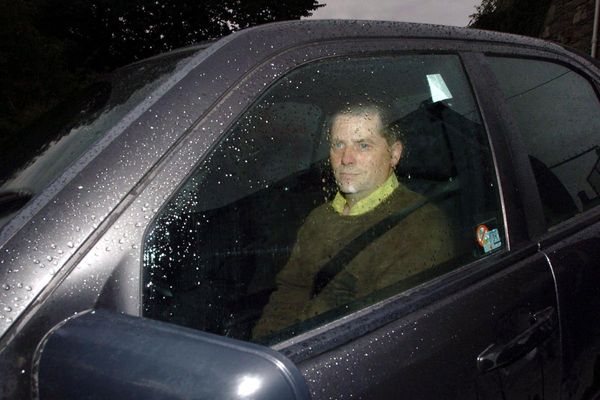
Just last year it looked like the news media couldn’t live without billionaires. Remember? They were going to save journalism with their mix of savvy, cash and promises of independence? Now it looks like we can’t live with them.
Take SpaceX and Tesla CEO Elon Musk. His botched takeover of Twitter — as well as his weaponising of the “Twitter Files” into some weird simulacrum of journalism — told us something we should have long known: journalism creaks when billionaires try to bend it to their own beliefs.
Or look at 2023’s all-purpose villain Sam Bankman-Fried, former CEO of the now-bankrupt crypto exchange FTX. Back when he was a billionaire, he translated his “effective altruism” into money for start-up media, encouraging crypto-friendly reporting. So far, Semafor has had to buy back SBF’s $14 million share, while Pro Publica has returned the first tranche of what was to have been a $7 million grant.
The 2013 takeover of The Washington Post by Amazon founder Jeff Bezos came freighted with confidence that big tech could bring some Silicon Valley “10x not 10%” moonshot innovation. While the WaPo has become a better paper — sharper, more differentiated, strong on data, surprisingly collaborative — layoffs last month (days after Bezos dropped by) sparked fears (quickly denied) that the billionaire was abandoning the publication.
It was a moment that forced an answer to the question: do big tech billionaires have a secret sauce to save traditional media? No, looks like they don’t. It answered the flip question too: can billionaires leverage traditional media (like WaPo) to boost their products (like the Kindle)? Again, no.
Meta’s billionaire owner Mark Zuckerberg seems to have come to the same conclusion. Regarding Facebook, he’s crab-walking away from promoting news content: ceasing payments to publishers, cutting grants to start-ups, winding back the News Tab, and abandoning Instant Articles and its brief-lived Bulletin newsletter program. Even the News Feed is shedding the “News”. Now it’s the plain old “Feed”.
Australia’s own billionaire media owners will be wondering what this means for payments under Australia’s news media bargaining code, as well as the profits it’s delivered to their commercial mastheads.
Bezos and Zuckerberg weren’t the first avatars of billionaire-as-saviour. In 2012, four years into the spiral of US mastheads following the 2007-08 global financial crisis, contrarian Warren Buffet started buying mastheads big. By 2019, he acknowledged most newspapers were “toast”. A year later he bailed out, selling his 31 newspapers for about $185 million.
Good price under the circumstances. Three years on, the stock market reckons buyer Lee Enterprises, which owned more than twice the daily mastheads, is worth less than they paid for Buffet’s 31 papers. Last year, Lee announced $64 million in cuts including staff layoffs.
The latest billionaire to dive into the media pool is in India, where Gautam Adani, a friend of Prime Minister Narendra Modi, is buying up once-critical media. In late December, his company Adani Group completed its hostile takeover of the country’s leading independent broadcast and digital news NDTV. The founding Roy family (not to be confused with Succession’s fictional Roys) declined a continuing role and senior journalists are leaving the company.
Plenty are disconcerted by Adani‘s explainer: media, he said, is a “responsibility” rather than a business interest. That responsibility? “You should have courage when the government is doing the right thing every day. You have to also say that,” he said. (Australians can follow journalist Rick Morton’s live-tweeting of the robodebt royal commission to see how that sort of “courage” works in practice.)
Late last year, Adani could have been hoping to replace Musk as the world’s richest man. Now, his company is finding media investments bring added scrutiny, with a Hindenburg report sending its stock plummeting, now down US$86 billion (A$120 billion).
In 20th-century Australia, the billionaire-media track worked the other way around: cashflow-rich media in the 1960s and 70s (helped by television licenses thrown their way by a grateful Menzies government) made their owners into (inflation-adjusted at least) billionaires, e.g. the Packers, the Murdochs, the Fairfaxes. In the 1980s, media reverted to type, becoming a trophy asset for the (at least temporarily) very rich, such as Reg Ansett, Alan Bond, Christopher Skase, Frank Lowy or Robert Holmes à Court.
Most turned out to be FIFO — fly in, fly out — owners who found the assets more trouble than their social cachet was worth. Today’s billionaires are learning the same lesson.
Ah, well, the billionaire bailout of media was a nice dream while it lasted. Now, it looks like the dream is over. Maybe that’s a good thing.
Have billionaire owners done anything to save the media? Will they miss it when it’s gone, or is this part of the plan? Let us know your thoughts by writing to letters@crikey.com.au. Please include your full name to be considered for publication. We reserve the right to edit for length and clarity.







